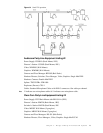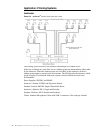
Chapter 3 - Design of Party-Line Intercom Systems 21
C HAPTER
3
C
HAPTER
3
D
ESIGN
OF
P
ARTY
-L
INE
I
NTERCOM
S
YSTEMS
STAN HUBLER
Overview
In this chapter, designing a system based on your needs is first approached by Defining
And Meeting Your Needs. This topic is designed to help you choose or at least
understand the system. IFB is described in The IFB System (One Way Communications
System). Then Connecting (Interfacing) to Other Communications Systems discusses
real world solutions to interfacing these systems. The Some Practical Considerations
section discusses real world environments and some work-arounds. A Summary closes
this chapter.
Defining And Meeting Your Needs
Your needs could include buying, renting, assembling or expanding a system. Application
Block Diagrams are a good starting place to define a system. In this section, block
diagrams of applications in each of the three leading systems will be shown and discussed.
These diagrams will range from relatively simple to complex systems. One of these block
diagrams could be close to what you need to know, give or take a station or so. If you
make a copy of the diagram and mark it up, this could define your system.
Disclaimer
The block diagrams are for instructional purposes, and though every effort has been for
accuracy, the manufacturers offerings are often changing. It pays to double check with the
manufacturer or rental house to verify the exact system available before buying or renting.
Application 1 Generic Single Channel Systems
The first applications are generic single channel systems, see Fig.1.3. They consist of a
power supply, belt packs, headsets, splitter boxes, and microphone cables. These are
systems that could be used in a small television studio production, a small outside
television field production, or an industrial test of a large system. Depending on the detail
of the block diagram, you may be able to compile an equipment list from this diagram.


















